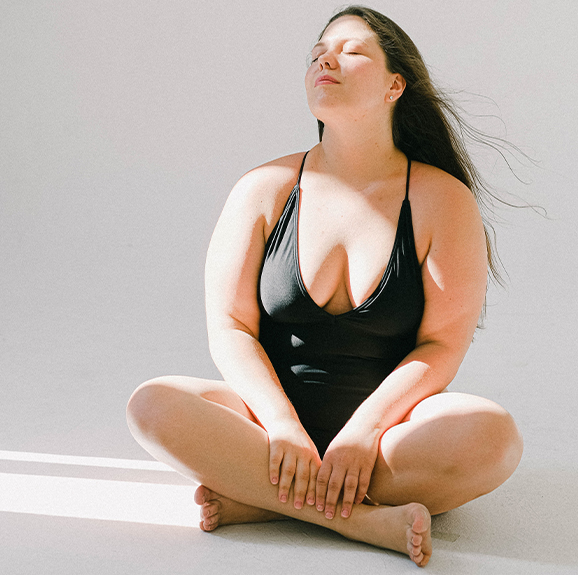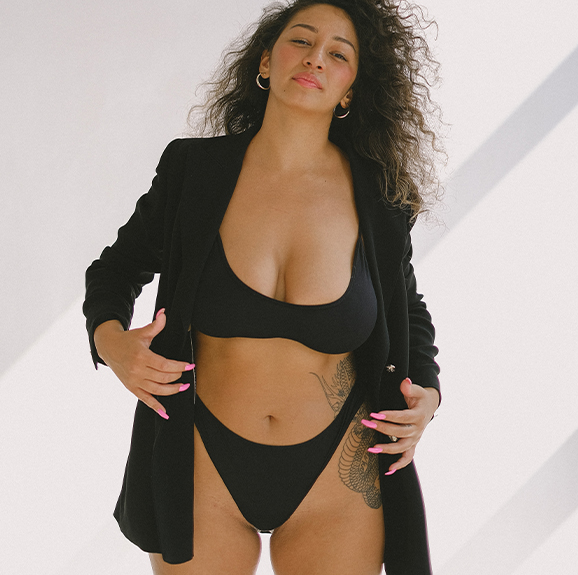
When we think about our bodies, we often find ourselves navigating a map of hidden treasures and dangers. In an era dominated by social media it is quite difficult to make this journey smoothly, when there are so many rules, norms and myths that you "should" follow, seeking guidance to reach the "best version of yourself". yours". And if such a thing does not exist? How do you accept your body the way it is?
What is body neutrality?
Body neutrality promotes the idea of accepting your body as it is. The mindset is a little different than body positivity, and if you've ever wondered how it works, its principle is to recognize both the capabilities and imperfections of your unique body. Here are some differences between the two:
Positivity:
Focuses on outward appearance (all bodies are beautiful)
It encourages you to love your body for the way it looks
It often excludes those who do not fit the typical beauty standards
Neutrality:
It means appreciating the body as it is and for what it can do
It urges you to accept your body for simply existing
It may be a better option for those with marginalized bodies

Photo source: Pexels.com, Anna Shvets
How to practice self-acceptance and neutrality
If you're thinking about practicing body neutrality and don't know where to start, here are some ways you can incorporate aspects of body neutrality into your everyday life.
The way you talk to yourself
The easiest way to adopt new body neutral habits is to start by becoming aware of how you communicate with yourself about your body. You can start with statements like: "my arms are strong" or "my legs can walk a long time".
But it's just as important to recognize the ways in which your body isn't working perfectly, and to do so without any judgment or shame.
Conversations with other people
Although discussions about our bodies are the order of the day, we still have a long way to go to fully understand that unrealistic beauty standards are harmful, in general, because body "ideals" are unattainable for most people. Moreover, for some it can be even traumatic to hear comments about their bodies, even if they seem harmless at first; there are words that can be disturbing.
Intuitive nutrition
What does it mean to eat in a "neutral" way to your body? The focus is on the foods that work best for both your needs and your taste: in short, eat what you like, what you can digest well, and what gives you the energy you need. A simple way to practice body neutrality - intuitive eating.
This eating style promotes a healthy attitude towards food and body image, but it is a process that encourages you to trust your own body and know its needs, as neutrality does not imply a one-size-fits-all diet.
To feel comfortable in your clothes
Body neutrality is also about turning your attention from how your body looks to other aspects more important to them. It's more about finding a middle ground between aesthetics and comfort, and especially feeling emotionally comfortable when wearing them. So when choosing your clothes, make sure they are comfortable and suit your style.

Photo source: Pexels.com, Anna Shvets
The sport
While it's true that exercise has benefits for everyone, following a weight loss program to shape your body or burn fat is counter to body neutrality and positivity. Because the media promotes more sports as a means of losing weight, this can be harmful for some people. It can encourage negative feelings and can be challenging, especially when we're trying to conform to certain social standards: staying positive in real life can be much harder than on Instagram.
Self-acceptance is an authentic practice
Body positivity was a socio-political movement aimed at helping people discriminated against because of their body appearance, but recently, body positivity has become just a buzzword in many cultures. So, to find your own formula for self-acceptance, you don't have to follow one movement or another. In fact, you can take what makes you feel good from several philosophies or practices and combine both positivity and neutrality to create your own authentic lifestyle.
Some ideas you can adopt from body positivity are strong self-esteem and loving and caring for your body. You can start with simple steps, turning the most natural processes into rituals of acceptance and love: menstruation, for example.
Using 100% organic cotton menstrual products is an act of self-care and love that empowers your body to be healthy and comfortable.
From the body neutral movement, you can take the practice of being grateful for what your body can do and also integrate mindfulness into your life. Think of your body as a temple and honor its uniqueness and what's inside rather than how it looks. It can be challenging, but you're not alone: there are so many of us who have embraced acceptance and found confidence in our bodies!






















